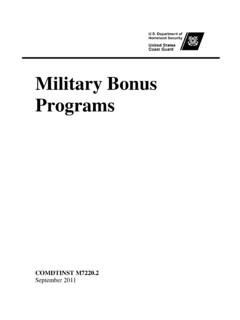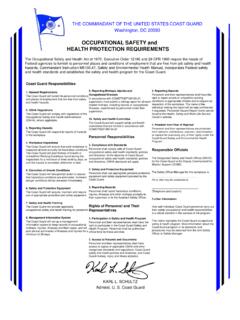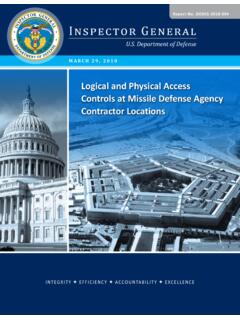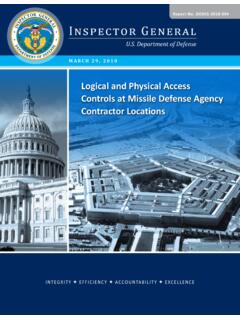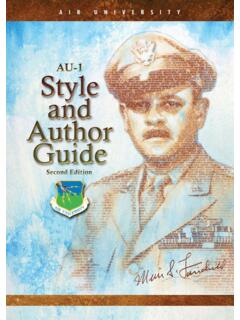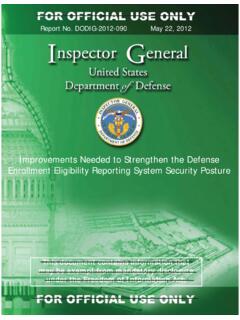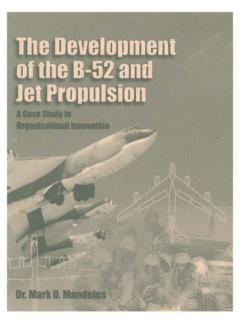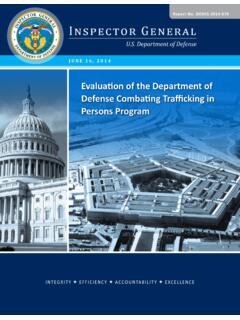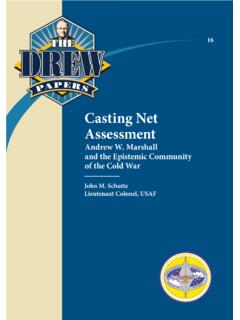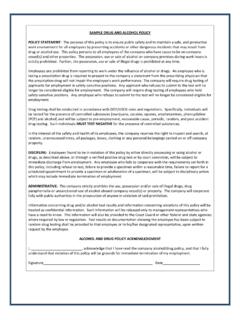Transcription of Military Drug and Alcohol Policy
1 Military drug and Alcohol Policy COMDTINST M100 June 2018 PAGE INTENTIONALLY LEFT BLANK DISTRIBUTION SDL No. 168 a b c d e f g h i j k l m n o p q r s t u v w x y z A X X X X X X X X X X X X X X X X X B X X X X X X X X X X X X X X X X X X X X X X X X X C X X X X X X X X X X X X X X X X X X X X X X X X X X D X X X X X X X X X X X X X X X X X X X X E X X X X X X X X X X X X X X X X X X X X F X X X G X X X X H NON-STANDARD DISTRIBUTION: COMMANDANT INSTRUCTION Subj: Military drug AND Alcohol Policy Ref: (a) Coast Guard Substance Abuse Prevention and Treatment Manual, COMDTINST (series) (b) Military Separations, COMDTINST (series)(c)Coast Guard Medical Manual, COMDTINST (series)(d)Discipline and Conduct, COMDTINST (series)(e)Reserve Policy Manual, COMDTINST (series)(f)Safety and Environmental Health Manual, COMDTINST (series)(g)Urinalysis Tactics, Techniques, and Procedures (TTP), CGTTP (h) Military Personnel Data Records (PDR) System, COMDTINST (series)(i)Command drug and Alcohol Representative (CDAR) Tactics, Techniques, andProcedures (TTP), CGTTP (j)United States Coast Guard Regulations 1992, COMDTINST (series)(k) Military Justice Manual, COMDTINST (series) This Manual establishes Coast Guard Policy concerning administration ofmilitary drug and Alcohol policies.
2 It also establishes performance and discipline standardsfor drug and Alcohol incidents and provides standards by which these incidents will beproperly All Coast Guard unit commanders, commanding officers, officers-in-charge,deputy/assistant commandants, and chiefs of headquarters staff elements must comply withthe provisions of this Manual. Internet release is United States Coast Guard US Coast Guard Stop 7907 2703 Martin Luther King Jr Ave SE Washington, DC 20593-7907 Staff Symbol: CG-1331 Phone: (202) 475-5224 Fax: (202) 475-5927 Email: COMDTINST 18 JUN 2018 COMDTINST 2 AFFECTED. Coast Guard drug and Alcohol Abuse Program, COMDTINST , is hereby This Manual updates Coast Guard drug and Alcohol Policy . It incorporates changes to Policy initially established in 2014 ALCOASTs, specifically, COMDT COGARD WASHINGTON DC, 041842Z APR 14, ALCOAST 146/14 and COMDT COGARD WASHINGTON DC, 181835Z SEP 14, ALCOAST 390 This guidance is not a substitute for applicable legal requirements, nor is it itself a rule.
3 It is intended to provide guidance for Coast Guard personnel and is not intended to nor does it impose legally-binding requirements on any party outside the Coast CHANGES. This Manual has been revised from its previous version, reducing the volume by almost half by limiting its focus to Service Policy and by consolidating and clarifying repetitive or conflicting content. A thorough review of the entire Manual is strongly recommended. Major changes appropriate, Coast Guard tactics, techniques, and procedures (TTP) have been removed from this Policy and promulgated in appropriate TTP Drinking Age. To regulate Alcohol consumption, protect the health, safety, and readiness of Service members, and maintain good order and discipline, the minimum drinking age is 21 years of age for all Coast Guard Military members on active duty, wherever located. This has been established as a Punitive General Order. Some limited exceptions to the minimum drinking age apply to members on authorized leave and Coast Guard Reserve component members when not on active Medical diagnosis documentation and treatment plans are now entered into a member s Medical Record and administrative remarks entries will be entered into the member s Personnel Data Record (PDR).
4 Zero Tolerance scope to include illicit drug use, including designer drugs, misuse of over-the-counter products, and other substance Self-Referral and Command Referral as approaches to Alcohol screening, in addition to Incident Referral . term Alcohol -related situation has been removed and abolished, inasmuch as it had no association with Alcohol use, but relates to general first-level Flag officer second-chance program retention authority for Alcohol gambling as a use disorder that will be treated the same as Alcohol or drugs from a medicinal standpoint. Gambling disorder is known to co-occur with anxiety, depression, and the substance use disorders described herein. COMDTINST 3 ASPECT AND IMPACT development of this Manual and the general policies contained within it have beenthoroughly reviewed by the originating office in conjunction with the Office ofEnvironmental Management, Commandant (CG-47).
5 This Manual is categoricallyexcluded under current Department of Homeland Security (DHS) categorical exclusion(CATEX) A3 from further environmental analysis in accordance with Implementationof the National Environmental Policy Act (NEPA), DHS Instruction Manual023-01-001-01 (series). Manual will not have any of the following: significant cumulative impacts on thehuman environment; substantial controversy or substantial change to existingenvironmental conditions; or inconsistencies with any Federal, State, or local laws oradministrative determinations relating to the environment. All future specific actionsresulting from the general Policy in this Manual must be individually evaluated forcompliance with the NEPA, DHS, and Coast Guard NEPA Policy , and compliance withall other applicable environmental No paper distribution will be made of this Manual. An electronic versionwill be located on the following Commandant (CG-612) web : , andCGPortal: MANAGEMENT CONSIDERATIONS.
6 This Manual has been evaluated forpotential records management impacts. The development of this Manual has beenthoroughly reviewed during the directives clearance process, and it has been determinedthere are no further records scheduling requirements, in accordance with Federal RecordsAct, 44 3101 et seq., National Archives and Records Administration (NARA)requirements, and the Information and Life Cycle Management Manual, (series). This Policy does not have any significant or substantial change toexisting records management The forms referenced in this Manual are available in USCG ElectronicForms on the Standard Workstation or on the Internet ; andCG Portal at FOR CHANGES. Recommendations for changes or improvements should besubmitted via the chain of command to the Office of Military Personnel, Policy andStandards Division, Commandant (CG-1331), at W. SIBLEY /s/Rear Admiral, Coast GuardActing Director of Reserve and Military PersonnelCOMDTINST 4 PAGE INTENTIONALLY LEFT BLANK COMDTINST i RECORD OF CHANGES CHANGE NUMBER DATE OF CHANGE DATE ENTERED BY WHOM ENTERED COMDTINST ii PAGE INTENTIONALLY LEFT BLANK COMDTINST i Table of Contents CHAPTER 1 OVERVIEW.
7 1- 1 A. Objective.. 1- 1 B. Authority.. 1- 1 C. Applicability.. 1- 1 D. Other Policies and Procedures.. 1- 1 E. Gambling Disorder.. 1- 2 CHAPTER 2 ROLES AND RESPONSIBILITIES .. 2- 1 A. Objective.. 2- 1 B. Responsibilities.. 2- 1 CHAPTER 3 DRIVING UNDER THE INFLUENCE (DUI) .. 3- 1 A. Objective.. 3- 1 B. Driving Under the Influence (DUI).. 3- 1 C. Driving Privileges.. 3- 1 D. Administrative Discharge Proceedings (ADP).. 3- 2 E. Administrative and Disciplinary Actions.. 3- 2 F. Substance Abuse Education (Prime for Life or myPRIME) .. 3- 4 CHAPTER 4 Alcohol USE DISORDERS .. 4- 1 A. Objective.. 4- 1 B. Alcohol Use Disorder (AUD).. 4- 1 C. CO/OIC Responsibility.. 4- 1 D. Alcohol Incident (AI).. 4- 2 E. Alcohol Screening.. 4- 3 F. Referrals to Alcohol Treatment.. 4- 3 G. Response to Alcohol Incident.. 4- 3 H. Separation Conditions for Alcohol Incident.. 4- 3 I. Recommendation for Retention.. 4- 4 CHAPTER 5 drug INCIDENTS.
8 5- 1 A. Objective.. 5- 1 B. Substance Use Disorder-Severe (or drug Dependence).. 5- 2 C. drug 5- 3 D. drug Incident Investigations.. 5- 3 E. Determining a drug Incident.. 5- 5 COMDTINST ii CHAPTER 6 URINALYSIS .. 6- 1 A. Objectives.. 6- 1 B. Urinalysis.. 6- 1 C. Urinalysis Tactics, Techniques, and Procedures (TTP).. 6- 1 D. Urinalysis Coordinators (UCs) and Urinalysis Observers (UOs).. 6- 1 E. Authority for Urinalysis Collection.. 6- 2 F. Random Testing and Procedural Guidance.. 6- 5 G. Collecting Urine Specimens.. 6- 5 H. Member Located at Other Than Coast Guard Commands.. 6- 6 I. Preparing Specimen Custody Document - drug Testing, DD Form 6- 6 J. Coast Guard Urinalysis Ledger, Form CG-1000.. 6- 6 K. Specimen Safe Storage.. 6- 6 L. Member-Requested Retests.. 6- 7 M. Sample Adulteration, Substitution, and Dilution.. 6- 7 N. Steroid Testing.. 6- 8 CHAPTER 7 GLOSSARY .. 7- 1 A. Definitions.. 7- 1 B. Acronyms.
9 7- 5 COMDTINST 1- 1 Chapter 1 OVERVIEW A. Objective. This Manual discusses the most common forms of use disorders in the Military . Drugs (prescription and illicit), Alcohol , and gambling are the most common substance use disorders in the Coast Guard. This Policy directs the initiation of drug and Alcohol screening and treatment, as mandated by law (10 1090, Identifying and Treating drug and Alcohol Dependence). The intent is to identify Coast Guard members who are misusing drugs or Alcohol and to refer them for screening or treatment, as appropriate, in accordance with Reference (a), Coast Guard Substance Abuse Prevention and Treatment Manual, COMDTINST (series). Note: Gambling, as a use disorder, will be treated the same as Alcohol or drugs from a medicinal standpoint. Gambling disorder is known to co-occur with anxiety, depression, and the substance use disorders described herein. Administratively, a gambling disorder referral is the same as an Alcohol or drug referral.
10 B. Authority. The authority for this Manual comes from Title 10 and Title 14, United States Code ( ). Specific laws will be cited in subsequent Chapters, as appropriate. C. Applicability. This Manual applies to Coast Guard active duty Military members, including reservists while on orders. D. Other Policies and Procedures. 1. Reference (b), Military Separations, COMDTINST (series), sets policies and standards to separate members who violate the policies and standards in this Manual. 2. Reference (c), Coast Guard Medical Manual, COMDTINST (series), and Reference (a), Coast Guard Substance Abuse Prevention and Treatment Manual, COMDTINST (series), establish policies and standards for treating members who have a substance abuse disorder. 3. Reference (d), Discipline and Conduct, COMDTINST (series), and the Uniform Code of Military Justice (UCMJ), contain policies and standards for members who violate these policies.
